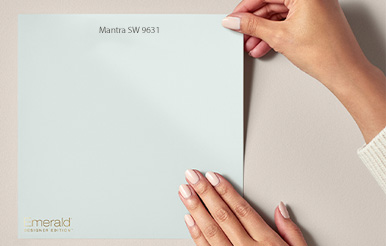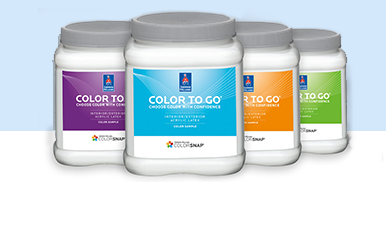Recent Questions
Answer Reverse hanging wallpaper means that every other strip of paper is installed in the opposite direction from how it comes off the roll. If the first strip is hung as it comes off the roll, the second strip would be rotated 180° and hung "upside down." The third strip would be hung in the same direction as the first, the fourth would be hung like the second strip, and so on.
Reverse hanging is done to mitigate shading variances that can occur on a run of paper. It is only done when the wallpaper has no pattern.
Answer At times the soaking process can be somewhat messy. For those wanting to avoid this, we do offer a paste activator. The paste activator can be brushed onto the back of the wallpaper in the same manner as paste. Once applied, book the segment of paper and set to one side so that the paste can become completely activated prior to hanging.
Answer Working from two rolls sometimes cuts down on waste when matching up a pattern since the repeat in a wallpaper pattern can result in greater waste.
Answer Measure wall width corner to corner. Each border strip should extend to the full width of wall plus 1/2" to extend around corners. Submerge border in water tray for prescribed time from the directions, book by loosely folding in an accordion fashion, and apply to the wall. If the border is being applied over wallcovering, do not wet border. You would use a vinyl to vinyl adhesive to hang the border. Wrapping corners by about 1/4" and smooth the surface. Make sure you wipe excess pasted off of the surface with a clean sponge.
Answer Sometime papers can simply be peeled off. If not a wallpaper shaver can sometimes be used to remove the paper from plaster walls without the need of liquid stripper. If these options do not work a chemical stripper may be needed.Many papers today are either solid vinyl or have a vinyl coating. This makes it difficult for stripper solutions applied to the surface to act on the adhesive. There are tools that can be used to perforate the surface of the wallpaper. Perforating the paper will save you time and effort in the stripping process. Using the right tool to scrape will also save time. A wallpaper shaver has a sharp edge and will actually minimize the damage to the wall. When soaking the surface with a stripper allow time for the solution to soften the paste. Usually a 15 to 20 minute period is enough. Apply more solution prior to beginning to scrape. If you do these things you should find that project just got a lot easier.









